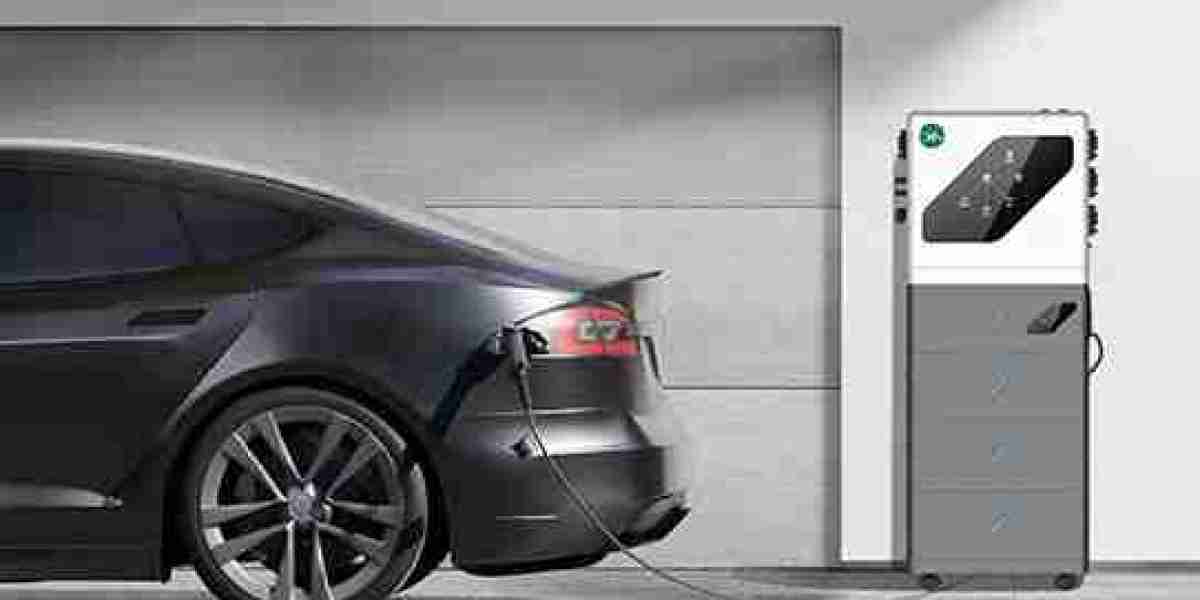Welcome to our comprehensive guide on All-in-One Energy Storage Systems (ESS). In today's era of renewable energy, the integration of solar panels with efficient energy storage solutions is paramount. All-in-One ESS represents a revolutionary approach to managing and utilizing energy effectively. Whether you're a homeowner looking to reduce electricity bills or a business owner aiming for energy independence, understanding All-in-One ESS is crucial. This guide aims to provide you with in-depth insights into the workings, benefits, selection criteria, installation, maintenance, and real-world applications of All-in-One ESS. Let's embark on this journey to explore the future of energy management together.
What is an All-in-One ESS?
Energy Storage Systems (ESS) have emerged as essential components of modern energy infrastructure. But what exactly does "All-in-One" imply when it comes to ESS?
What does "All-in-One" Mean?
The term "All-in-One" suggests integration and consolidation. In the context of ESS, it refers to the combination of various components essential for energy storage and management into a single, cohesive system. Unlike traditional setups where different elements such as batteries, inverters, and energy management systems are separate entities, an All-in-One ESS streamlines these components into a unified unit. This integration simplifies installation, improves efficiency, and enhances overall performance.
Understanding ESS (Energy Storage Systems)
Before delving deeper into All-in-One ESS, let's establish a clear understanding of Energy Storage Systems. ESS encompasses technologies and methods used to store electricity for later use. These systems play a crucial role in bridging the gap between energy generation and consumption, particularly in scenarios where renewable sources like solar and wind exhibit intermittency. ESS allows surplus energy generated during periods of low demand to be stored and utilized when demand is high, thereby enhancing grid stability and reliability.
Components of an All-in-One ESS
An All-in-One ESS typically comprises several key components, each serving a specific function within the system. These components may include:
Battery Storage: The heart of the system, batteries store the excess energy generated by solar panels kit or other renewable sources for later use.
Power Inverter: Responsible for converting the DC (direct current) electricity stored in the batteries into AC (alternating current) electricity usable by household appliances or the grid.
Energy Management System (EMS): Controls and optimizes the flow of electricity within the system, ensuring efficient operation and maximizing cost savings.
Monitoring and Control Interface: Provides users with real-time data on energy production, consumption, and system performance, allowing for remote monitoring and management.
The integration of these components into a single unit eliminates the need for complex wiring and compatibility issues, simplifying the installation process and improving overall system reliability.

How Does an All-in-One ESS Work?
Charge and Discharge Process
The fundamental principle behind an All-in-One ESS is the ability to store surplus energy during times of low demand and discharge it when demand is high. This charge and discharge process is orchestrated by sophisticated control algorithms within the Energy Management System (EMS).
During periods of abundant solar energy production, such as sunny days, the excess electricity generated by solar panels is directed to charge the batteries within the ESS. The EMS continuously monitors energy production, consumption patterns, and grid conditions to determine the optimal times for charging and discharging.
Conversely, when solar energy production is insufficient to meet demand, such as during nighttime or cloudy weather, the stored energy within the batteries is discharged to power household appliances or feed electricity back into the grid. The EMS ensures that this discharge occurs efficiently, prioritizing critical loads and maximizing self-consumption to minimize reliance on the grid.
Integration with Solar Panels
One of the key advantages of an All-in-One ESS is its seamless integration with solar panels. By combining energy storage with solar generation, homeowners and businesses can maximize their energy independence and reduce reliance on external sources.
Solar panels generate DC electricity, which is then converted into AC electricity by inverters for immediate use or storage within the ESS. The integrated design of All-in-One ESS ensures optimal compatibility and efficiency between the solar array and energy storage components, resulting in higher overall system performance.
Grid Interaction and Backup Functionality
In addition to optimizing self-consumption and reducing electricity bills, All-in-One ESS also offers grid interaction and backup functionality. During times of grid outages or emergencies, the ESS can seamlessly transition to backup mode, providing uninterrupted power to essential loads within the premises.
Furthermore, All-in-One ESS systems can participate in grid services such as peak shaving, frequency regulation, and demand response programs. By intelligently managing energy flows and responding to grid signals, these systems contribute to grid stability and support the integration of renewable energy sources into the existing infrastructure.
What Are the Benefits of Using an All-in-One ESS?
Energy Independence
One of the primary advantages of deploying an All-in-One ESS is the attainment of energy independence. By harnessing solar energy and storing it for later use, users can significantly reduce their reliance on external energy sources, such as the grid. This independence provides greater control over energy consumption patterns and insulates users from fluctuations in utility prices.
In regions with unreliable or limited access to the grid, All-in-One ESS can serve as a reliable alternative, ensuring uninterrupted power supply even during outages or emergencies. This enhanced resilience is particularly valuable for critical infrastructure, such as hospitals, schools, and telecommunications facilities.
Cost Savings
Another compelling benefit of All-in-One ESS is its potential for substantial cost savings over the long term. By leveraging solar energy and optimizing self-consumption, users can mitigate or even eliminate electricity bills, depending on their energy usage patterns and local utility rates.
All-in-One ESS systems enable users to take advantage of incentives, rebates, and net metering programs offered by governments and utilities. These financial incentives can further offset the upfront costs of installation and accelerate the return on investment for users.
Environmental Impact
In addition to economic benefits, All-in-One ESS contributes to a more sustainable and environmentally friendly energy landscape. By harnessing solar power and reducing reliance on fossil fuels, these systems help mitigate greenhouse gas emissions and combat climate change.
The integration of All-in-One ESS with renewable energy sources promotes the adoption of clean energy technologies and facilitates the transition towards a low-carbon future. As society increasingly prioritizes environmental sustainability, All-in-One ESS emerges as a critical enabler of this transition, offering both ecological and economic dividends.
Is an All-in-One ESS Suitable for My Home or Business?
Now that we've explored the benefits of All-in-One Energy Storage Systems (ESS), it's natural to wonder whether such a system is suitable for your specific needs and circumstances.
Assessing Energy Needs
The first step in determining the suitability of an All-in-One ESS is to assess your energy needs and consumption patterns. Consider factors such as the size of your household or business, daily energy usage, peak demand periods, and the availability of renewable energy sources such as solar.
If your energy consumption is relatively high or if you experience frequent grid outages, an All-in-One ESS may offer significant value by providing backup power and reducing reliance on the grid. Conversely, if your energy needs are minimal or if you're already satisfied with your current energy setup, the investment in an All-in-One ESS may not be warranted.
Compatibility with Existing Systems
Another crucial consideration is the compatibility of an All-in-One ESS with your existing energy infrastructure. Evaluate whether your home or business is equipped with solar panels, inverters, and other renewable energy components that can seamlessly integrate with the ESS.
Additionally, consider the age and condition of your electrical wiring and equipment, as well as any regulatory or technical requirements that may impact the installation and operation of an All-in-One ESS. Consulting with a qualified energy professional can help assess compatibility and identify any necessary upgrades or modifications.
Scalability Options
Flexibility and scalability are essential factors to consider when evaluating the suitability of an All-in-One ESS. Assess whether the system can accommodate future changes in energy needs, such as expansions to your home or business, increased energy demand, or advancements in renewable energy technologies.
Look for All-in-One ESS solutions that offer modular designs and expandable storage capacities, allowing you to scale up or down as needed without significant disruption or additional costs. This scalability ensures that your investment in an All-in-One ESS remains viable and adaptable over the long term.
By carefully evaluating your energy needs, assessing compatibility with existing systems, and considering scalability options, you can determine whether an All-in-One ESS is suitable for your home or business. Keep in mind that the decision to invest in such a system should be based on a thorough understanding of your specific requirements and objectives.
How to Choose the Right All-in-One ESS for Your Needs?
Choosing the right All-in-One Energy Storage System (ESS) requires careful consideration of several key factors to ensure that the system meets your needs and delivers optimal performance.
Capacity and Power Rating
The capacity and power rating of an All-in-One ESS determine its ability to store and deliver electricity effectively. Assess your energy consumption patterns and peak power demands to determine the appropriate size of the ESS for your needs.
Consider factors such as the size of your property, the number of occupants or employees, and the types of appliances and equipment you use. A larger capacity ESS may be necessary for properties with high energy demands or off-grid applications, while smaller systems may suffice for residential or small commercial use.
Warranty and Maintenance
When investing in an All-in-One ESS, it's essential to consider the warranty coverage and maintenance requirements offered by the manufacturer. Look for systems with comprehensive warranties that provide protection against defects in materials and workmanship, as well as performance guarantees for a specified duration.
Additionally, inquire about the recommended maintenance procedures and intervals for the ESS, including battery maintenance, software updates, and troubleshooting protocols. Choose a system with a reputable manufacturer and reliable support network to ensure prompt assistance and resolution of any issues that may arise.
User-Friendly Features
Ease of use and accessibility are critical considerations when selecting an All-in-One ESS for your home or business. Look for systems with intuitive user interfaces, mobile app integration, and remote monitoring capabilities that allow you to monitor energy production, consumption, and storage in real-time.
Consider whether the ESS offers features such as load shifting, time-of-use optimization, and customizable energy management settings to maximize efficiency and savings. A user-friendly interface and robust feature set enhance the overall usability and satisfaction of the system, making it easier to harness the benefits of energy storage effectively.
Installation and Maintenance of All-in-One ESS
The successful installation and ongoing maintenance of an All-in-One Energy Storage System (ESS) are crucial for ensuring optimal performance and longevity.
Installation Process Overview
The installation of an All-in-One ESS typically involves several steps, beginning with a site assessment to evaluate factors such as available space, solar panel orientation, and electrical infrastructure. Once the site suitability is confirmed, the installation team will proceed with mounting the ESS components, connecting the wiring, and integrating the system with existing energy sources and loads.
During the installation process, adherence to local building codes, electrical regulations, and manufacturer specifications is essential to ensure safety and compliance. Qualified installers with experience in renewable energy systems should handle the installation to minimize the risk of errors and optimize system performance.
Safety Considerations
Safety is paramount when installing and operating an All-in-One ESS, given the high voltage and energy storage capacity involved. Installers should follow industry best practices and safety protocols to mitigate risks and prevent accidents during installation and maintenance.
Key safety considerations include proper grounding and bonding of components, installation of protective enclosures and barriers, and adherence to electrical safety standards such as NFPA 70 (National Electrical Code). Additionally, installers should undergo training and certification to handle ESS installations safely and effectively.
Routine Maintenance Tips
Regular maintenance is essential for preserving the performance and longevity of an All-in-One ESS. Maintenance tasks may include:
Battery Inspection: Regularly inspecting the batteries for signs of damage, corrosion, or abnormal behavior can help detect potential issues early and prevent costly failures. Check battery connections, terminals, and electrolyte levels as recommended by the manufacturer.
Software Updates: Keeping the ESS software up to date ensures compatibility with evolving grid requirements, improves system efficiency, and addresses any software-related issues or vulnerabilities. Monitor manufacturer notifications and consult with qualified professionals to perform software updates safely.
Performance Monitoring: Utilize the monitoring and control interface provided with the ESS to track energy production, consumption, and storage in real-time. Monitor system performance metrics such as state of charge, charging/discharging efficiency, and overall system health to identify any anomalies or inefficiencies.
By following these installation and maintenance best practices, you can ensure the safe, reliable, and efficient operation of your All-in-One ESS for years to come. Remember to consult with qualified professionals and adhere to manufacturer guidelines to maximize the performance and longevity of your energy storage system.
Case Studies: Real-World Applications of All-in-One ESS
To provide practical insights into the effectiveness and versatility of All-in-One Energy Storage Systems (ESS), let's explore real-world case studies highlighting their applications across different sectors and scenarios.
Residential Installation Examples
In residential settings, All-in-One ESS offers homeowners the opportunity to reduce electricity bills, enhance energy independence, and contribute to environmental sustainability. Consider the following example:
Case Study: The Smith Family Residence
The Smith family, residing in a suburban neighborhood, decided to invest in an All-in-One ESS to complement their existing solar panel installation and reduce their reliance on the grid. The system was installed seamlessly in their garage, integrating with their solar inverters and household appliances.
With the All-in-One ESS in place, the Smith family experienced significant reductions in their electricity bills, particularly during peak demand periods and cloudy weather when solar energy production was limited. The system provided home backup power during grid outages, ensuring uninterrupted operation of essential appliances such as refrigerators and lights.
Over time, the Smith family enjoyed increased energy independence and peace of mind knowing that they could rely on their All-in-One ESS to meet their energy needs reliably and sustainably.
Commercial and Industrial Implementations
In commercial and industrial settings, All-in-One ESS serves as a valuable asset for optimizing energy management, reducing operational costs, and supporting sustainability initiatives. Consider the following example:
Case Study: ABC Manufacturing Facility
ABC Manufacturing, a leading producer of industrial machinery, sought to improve the efficiency of its operations and reduce its carbon footprint. By integrating an All-in-One ESS with its existing solar array and production equipment, ABC Manufacturing achieved significant cost savings and environmental benefits.
The All-in-One ESS allowed ABC Manufacturing to store excess solar energy generated during off-peak hours and utilize it during periods of high energy demand, effectively reducing peak demand charges and grid dependency. Additionally, the system provided backup power during grid outages, ensuring uninterrupted operation of critical manufacturing processes.
As a result of implementing the All-in-One ESS, ABC Manufacturing not only reduced its electricity costs but also demonstrated its commitment to sustainability and corporate responsibility, earning accolades from customers, employees, and stakeholders alike.
Success Stories and Testimonials
Across residential, commercial, and industrial sectors, All-in-One ESS has transformed the way energy is managed, consumed, and utilized. Success stories and testimonials from satisfied users attest to the tangible benefits and value that these systems deliver.
Whether it's a homeowner enjoying lower electricity bills, a business owner optimizing energy efficiency, or a community embracing renewable energy, All-in-One ESS has become a cornerstone of the transition towards a cleaner, more sustainable energy future.




